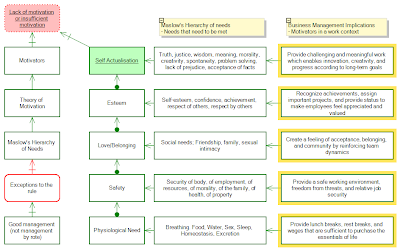
Based on the article 'African investment could be hit'
Interestingly, whilst drawing this model, the use of Southbeach clarified several points that were not explicitly stated in the article.
Southbeach Modeller is unique software that creative people use to design, innovate, solve problems, drive change and create new ideas. An integrated 'creativity' engine is included.




Another benefit of this collaborative approach is the wealth of experience and different ideas and approaches that can be brought to bear. More information, with more techniques for combining it enables better decision making to enable you and others to focus on what is important to get results and achieve your goals.

This Southbeach model shows a perspective of Peter F. Drucker; "the man who invented management". The column on the left represents qualities of the people in an organisation, and on the right, we have the activities of the organisation itself. These two systems are inextricably interlocked and require each other in order to succeed.
In Drucker's book, The Practice of Management, at the beginning of Chapter 13: The Spirit of an Organisation, he says:
"Two sayings sum up the 'spirit of an organisation'. One is the inscription on Andrew Carnegie's tombstone:Drucker believed that the key to excellence is focussing on people's strengths, and that recognising excellence, encouraging excellence, rewarding excellence, and providing full scope for individual excellence is what creates good spirit in individuals. Furthermore, it is this good spirit that provides the motivation that leads people to excel and do the best they can do rather than just enough to get by.Here lies a man
who knew how to enlist in his service
better men than himselfThe other is the slogan of the drive to find jobs for the physically handicapped:
It's the abilities,
not the disabilities,
that count.Management by objectives tells a manager what they ought to do. The proper organisation of their job enables them to do it. But it is the spirit of an organisation that determines whether they will do it. It is the spirit that motivates, that calls upon a person's reserves of dedication and effort, that decides whether they will give their best or do just enough to get by."
The excellence of the organisation then, is the result of making this excellence productive for others so that the overall strength of the organisation is amplified by the strengths of all the individuals within it, each of their weaknesses being counteracted by the strengths of those around them.
In the 1950s, Drucker was the first to say that people should be treated as assets, and not as liabilities to be eliminated, the first to argue that substance was more important than style and that good practice would always win out in the end over charismatic or cult leaders. Drucker originated the view of the corporation as a human community built on trust and respect for the worker and not just a profit-making machine.




















The ships store heavy fuel oils and this poses a risk. The oil and other cargo can be released during accidents – the frequency of which is increasing as the number of ships rises. Ships also consume the fuel, a process which releases both sulphur dioxide and carbon dioxide. This, coupled to the potential accidents, is releasing increased pollutants in the Antarctic.
The ships have other polluting effects. Notably, they create sewage and grey water waste, and also carry alien species into the region from their points of origin.
Over fishing of the region is another major negative factor. It arises from multiple causes – whaling, the pet industry and the pharmaceutical industry etc. This is driving a new form of fishing, an aggressive vacuuming of krill from the sea. This consumption of krill and shrimp is itself a danger because other fish depend on krill in the food chain. Birds and other wildlife in turn depend on the fish.
As a result of this situation, it has therefore been proposed that the following goals are pursued. The goals are indicated in the model:
The model shows that there is a useful side effect of accidents, which is to raise public awareness, leading to a strengthening of lobby groups which could bring the necessary regulations into being. Additionally, tourism brings more ships to the region, but also helps to educate and raise awareness.

Copyright © 2008-2013, Southbeach Solutions Ltd., All Rights Reserved